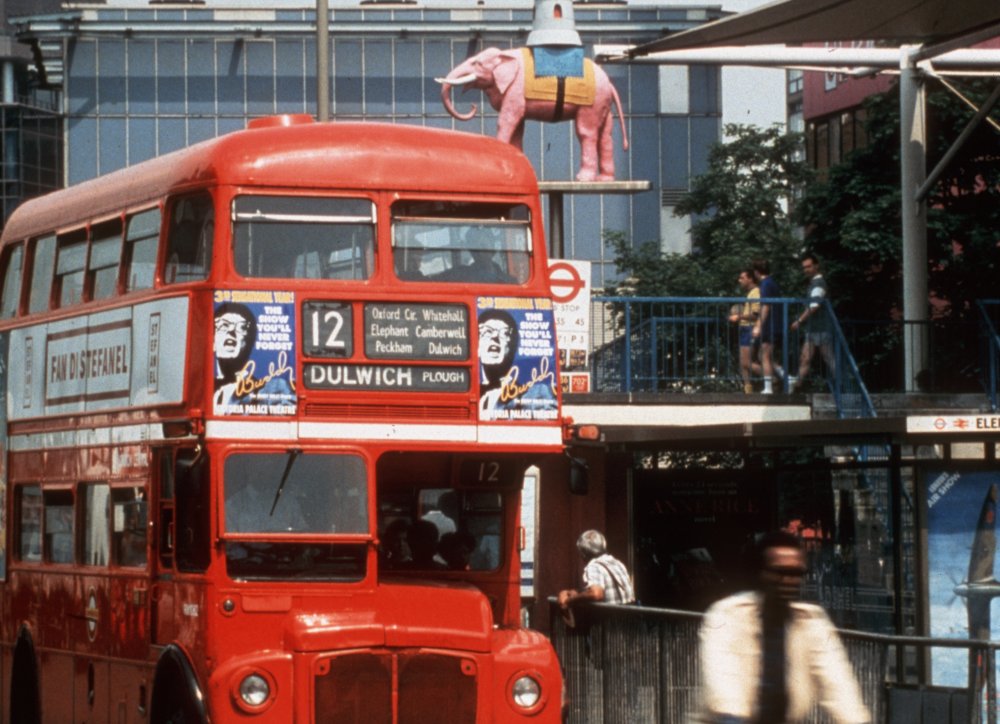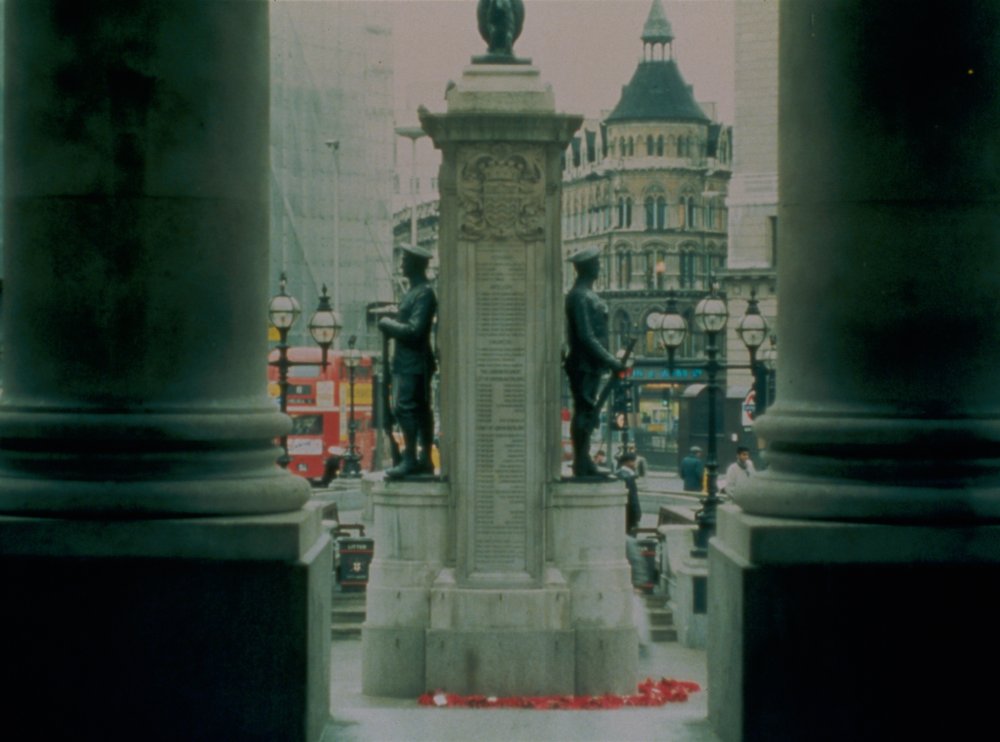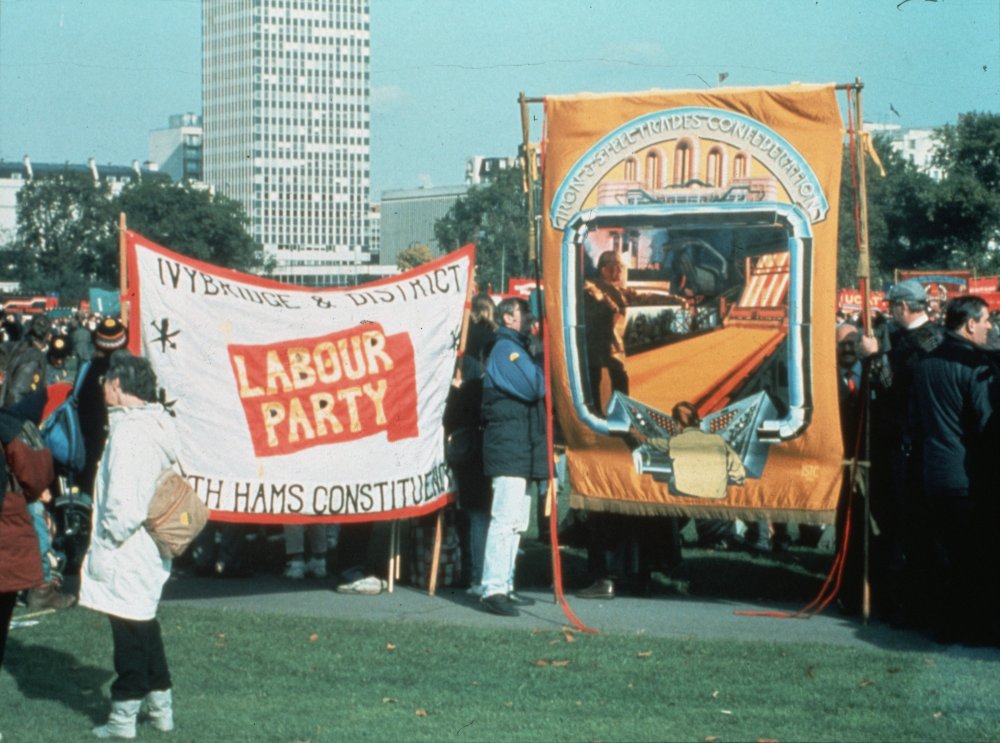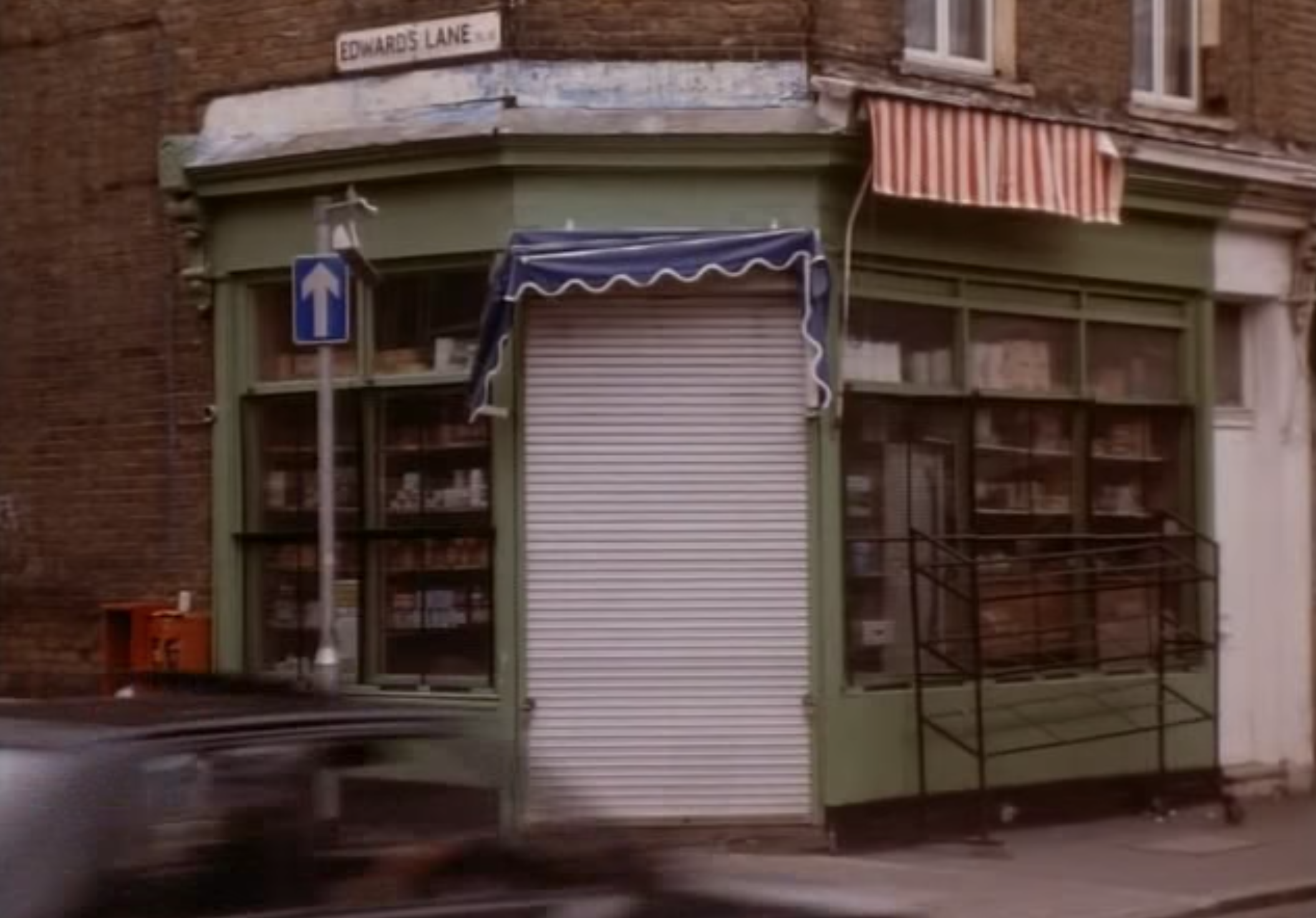
“Dirty old Blighty… a catalogue of modern miseries…. Its hatred of intellectuals, its ill health and bad food… sexual repressions, its hypocrisy and racism and its indolence… It’s so exotic, so homemade…” London is a strange and compelling film, summed up by the grumbling affection of some of its opening dialogue. Both a billet-doux and a poison pen letter to the city, it’s a moving image essay which is simultaneously about the capital, and about nowhere; about its protagonist Robinson, and nobody, and all of us. In short, it’s beautiful and tragicomic, and set the precedent for contemporary psychogeographic cinema that journeys through a city in its present, and tells of its history from a highly personal yet frequently universal standpoint.
The first in a trilogy of “Robinson” essay films by Patrick Keiller, London was released in 1994 though filmed (and thus set) in 1992. It takes the absent Robinson, who has for several years “wrestled with what he calls the problem of London” as its star. An unseen narrator (the measured intonations of Paul Scofield) is the man who tells of Robinson’s life—his likes and dislikes, his predilection for the design of old Routemaster buses, the fact he “isn’t poor because he lacks money but because everything he wants is unobtainable”. The narrator, he tells us, has been sent as “the witness and chronicler” for Robinson’s “explorations in what he thought would be the last months of his life”.

For the most part the imagery in the film is overwhelmingly bleak and grey—a reflection, perhaps, of a time when the bleak, grey John Major had just been re-elected; and in the aftermath of the IRA bombings.
While the narrator claims he and Robinson had an “uneasy sexual relationship”, there is little love here, much less passion, and a hell of a lot of unease. A certain detached romance is ever-present, though, if only through the literary references that provide a constant backdrop to the film. Robinson, it seems, is obsessed with comparing and contrasting both his own flaneurish wanderings and London itself with the likes of Baudelaire. “Sometimes I see the whole city as a monument to Rimbaud,” he is quoted as saying—a poignant yet absurdist comment shortly before the imagery flits to a bleak motorway underpass. Then, we’re on to footage of Brent Cross shopping centre: “If I were a poet this is where I would come to write, I feel instantly at home here.” There seems to be poetry to be found in this postmodern hellscape—in its fusty windowless air, sad old escalators and the garish sweatshirts of early nineties shoppers milling about, filling their time, like characters forever stuck in a Don DeLillo plot.
“I had always found London a very difficult camera subject, partly because of its physical drawbacks and partly because of the difficulty of seeing clearly the place where one lives”
The moments showing the shopping centre provide some of the only examples of the film straying from using static imagery (though there’s always motion in the still shots). London, of course, isn’t the first film to use such a style, and Keiller has explained his decision as based on the fact that “as the film is about London as a space, and as the space—streets, buildings and so on—doesn’t move, there isn’t anything for a moving camera to follow,” he told the BFI
. “I had always found London a very difficult camera subject, partly because of its physical drawbacks and partly because of the difficulty of seeing clearly the place where one lives, until one evening I went to see Chris Marker and Pierre Lhomme’s Le Joli Mai.”

As with some of the work of Chris Marker, the imagery of the film is often presented with little context and non-linearly. Perhaps it’s the gentle tones of the narrator, or the editing style, but for all the disjointedness this never feels jarring, even as we career between a queasily rocking inflatable Ronald McDonald; a pile of wooden palettes on fire; flowers on a road traffic accident sign; the Queen’s red-jacketed guards; proud statues; roadworkers; homeless people camped on Lincoln’s Inn Fields. Robinson, we’re told, has adopted his local area as an “exercise in psychic landscaping, drifting and free association”: a fitting description, indeed, for the entire film.
What’s so striking about London is that twenty-five years since its release—and notwithstanding the fashion or Tesco’s typography—the film feels so shockingly contemporary. We’re still at the mercy of austerity, and a wobbly and incompetent Tory party frequently govern from a position that’s both out of touch and physically out of reach from the inner city. London’s streets are still lined with tents that house the homeless. Yet London today as then is still somehow poetic in its sprawling strangeness, and there’s inspiration and a certain romance to be found in its pockets of rickety old decrepitude. “London,” Robinson says, “is a city under siege from a suburban government which uses homelessness, pollution, crime and the most expensive and run down public transport system of any metropolitan city in Europe as weapons against Londoners’ lingering desire for the freedoms of city life.”






